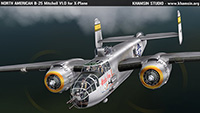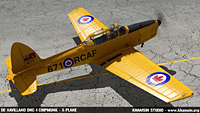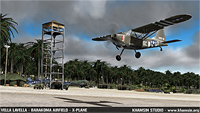Inertial Drift Indicator (IDI)
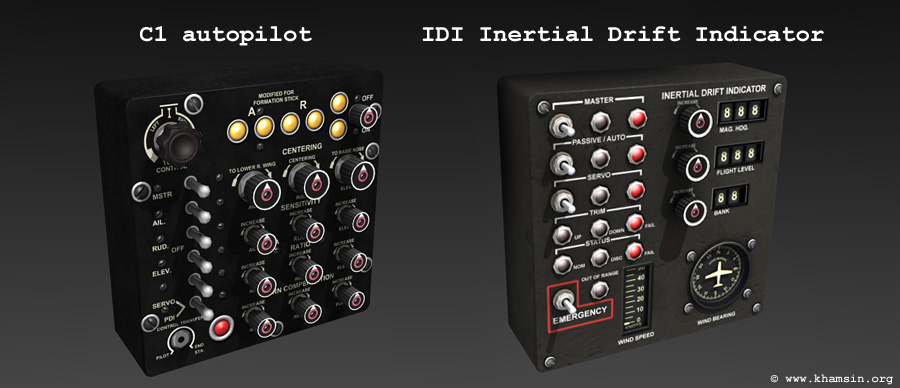
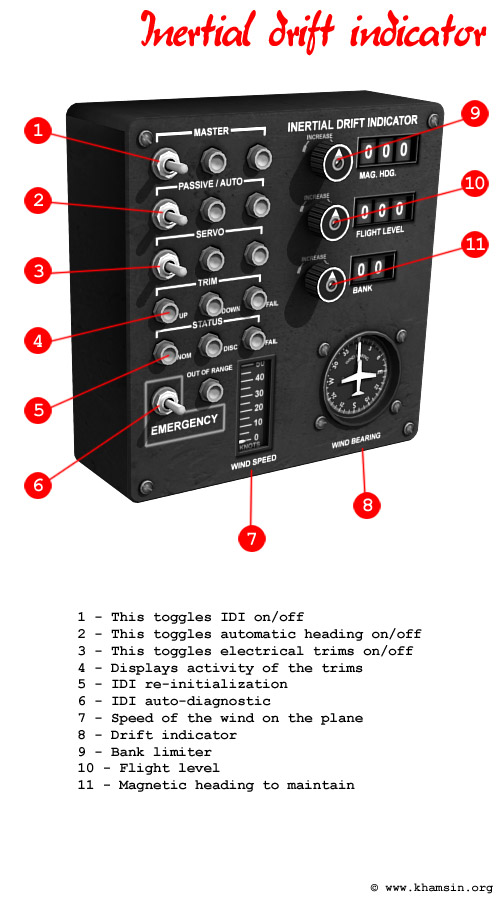
[IMPORTANT] The IDI (or Inertial Drift Indicator) is a fictionnal device intended to take the place of the standard C1 autopilot found in the original B17-G model.
Why was such a choice necessary?
There were several reasons for this. Khamsin & Arno54 had been thinking about a problem that could be summed up as such:
- the real C1 was unlikely to be understood even by relatively experienced users in X-Plane, and would therefore be totally unsuitable for beginners;
- the real C1 could not be accurately reproduced in the game without the use of a plugin, and even so the behavior of the real model could only be partially modeled.
- and finally, the B17G as she's being modeled, that is, without any military payload, is intended to be used by experienced SIM-pilots willing to undertake long-duration flights under conditions close to those encountered by real pilots in World War II.
The proposed device, with an ergonomy close to the historical C1, has most of the original unit’s functionality; it's an autopilot – and furthermore it has advanced navigation skills, offering trigonometric calculations, and thus allowing very long range flights with drift corrections, and as a navigator would suggest.
[IMPORTANT] The IDI does not apply heading modifications, it only suggests you do them! You will need to manually change the heading.
So, there are two distinct functions as for this device:
- autopilot
- navigational assistance.
While the autopilot may be very basic, it nonetheless is much more efficient than the historical device. You will find three primary switches on the face of the unit: Master ; Auto ; and Servos.
[IMPORTANT] For the IDI to function, radios must be switched ON, and INVERTERS must be active.
[IMPORTANT] The IDI must NOT be switched on unless the airplane is in stable flight, and with a secure margin for manoeuvering. No near stall conditions or sudden ascents/descents should be made while setting the unit, or once it is active.
B.1 - AUTOPILOT FUNCTIONS
- MASTER : toggle the IDI on or off. NB : if it's on, it controls the plane ! There is no stand-by mode.
- AUTO : applies the desired heading. If MASTER is ON and AUTO is OFF, the IDI will simply level the wings. AUTO applies what shows in the HEADING display.
- SERVOS : toggles on or off the servo-motors in the horizontal stabilizer. This allows the plane to engage a climbing path, climbing up to the desired flight level. Rate of climb will then be adjusted through the actual power being delivered. When switching the SERVO on, one will witness the TRIM light go on and off and the trim wheel is animated as well. SERVOS applies the settings displayed in the FLIGHT LEVEL window.
[IMPORTANT] SERVOS only works in the upward way : you cannot set a descent through SERVOS. To change the desired FL downwards, you have to disconnect SERVOS and go down manually by adjusting power (and trim.).
All three A/P functions have an auto-diagnostic system : if any of the FAIL lights activate, the entire IDI unit will need to be re-initialized. If re-initialization goes wrong, the IDI will have to be turned off and the plane handled by hand.
The trim lights allow you to make sure the servos work properly, and the three last lights NOM DISC & FAIL give you the actual status of the device :
- NOM (nominal) : the IDI is running fine.
- DISC (disconnected) : at least one system failed (an alarm will sound) and the IDI must be reinitialized.
- FAIL : means the IDI should no longer be used, and that at least one system is out-of-order.
To re-initialize the IDI :
- Set the 3 Primary Switches to OFF ;
- Toggle the EMERGENCY switch ON then OFF ;
- Make sure the plane is in a safe situation (trimmed for level flight)
- Turn the IDI back ON.
B.2 - USE OF IDI (AUTOPILOT)
The plane should be climbing, flaps and gear up, on a steady path, wings leveled. Radios should be on, so should be generators and invertors.
With the IDI set to OFF, set the desired heading, set the desired Flight Level, and set BANK to 5. NB : Flight Level is the altitude in ft /100. Make sure the IAS is ABOVE 110mph, and BELOW 150mph, then turn MASTER on, SERVOS on, AUTO on.
The plane will keep its speed and maintain climb up to the FL you’ve entered, then SERVOS will automatically disengage. The rate of climb is to be regulated through the power management, not through trim settings.
To change heading when in flight :
With IDI ON, disengage AUTO, dial the new heading, make sure BANK is set to 5, re-engage AUTO. The plane will turn to the new heading with wings almost leveled. Once the new heading is obtained, set BANK to 99 (automatic stabilizer, with a roll limit of 12,5°)
[IMPORTANT] The IDI reads its data from the gyroscopic compass and the artificial horizon. To have the correct heading, this compass should be regularly corrected according to magnetic compass. Furthermore, the artificial horizon only reads properly if the vaccum pump is working nominally ; this means that if the vacuum reading is out of range, the IDI should not be used or it could cause the plane to enter dangerous conditions of flight.
[IMPORTANT] BANK should ALWAYS be set to 5. Nonetheless, with strong winds or turbulence, 5° may not be enough for the plane to fix its course. You then may increase the value, but keep in mind the B17 has a huge inertia, so high roll values may decay into very dangerous situation (specially when flying IMC)
B.3 - USE OF IDI (NAVIGATION HELP)
The Drift Indicator displays useful data for long range flight, information that will allow an experienced pilot to maintain a correct route even with limited or no visual reference on ground features, for instance when flying over heavy cloud cover or long periods over open water.
The UNIT has 3 main INDICATORS : the WIND SPEED scale displays the actual wind speed at the plane's location. The WIND BEARING gauge displays the wind’s relative bearing (white arrow) ; the (turning) bottom of the gauge displays the magnetic heading of the plane, and the red marking displays the path the plane actually follows. Just above the IDI, a table provides the main calculations you will need to make in-flight.
[IMPORTANT] The Drift Indicator only works when the plane is not in a layer of wind that exceeds 50kt. Please consider in your calculations that wind indications are in KNOTS, whereas PLANE readings are in MPH ! If the wind turns out to be faster than 50kts, the OUT-OF-RANGE lights up, indicating the IDI should not be used for drift calculations. Nevertheless, while autopilot function may not be compromised, navigational accuracy will be.
EXAMPLE :
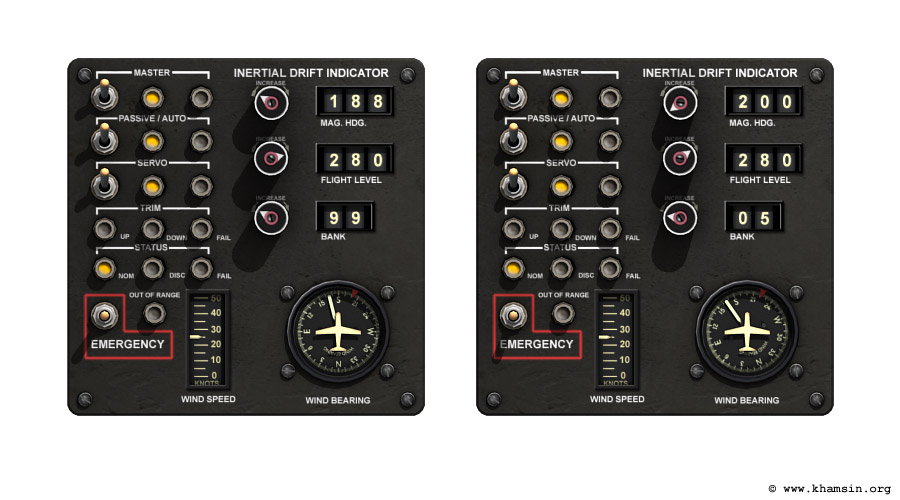
The scale indicates a 25kt wind. The gauge says the wind is coming from 45° relative to your the left. You want to follow heading 200 while flying at 150mph.
| RWB/SPEED | 10kts | 20kts | 30kts | 40kts | 50kts |
| 15° | 4 | 6 | 8 | 10 | 12 |
| 30° | 5 | 10 | 15 | 20 | 25 |
| 45° | 7 | 14 | 22 | 30 | 38 |
| 60° | 10 | 20 | 30 | 40 | 50 |
| 75° | 13 | 25 | 37 | 50 | 63 |
| 90° | 15 | 30 | 45 | 60 | 75 |
| DRIFT : DIVIDE BY EACH 100kt PLANE AIRSPEED | |||||
The table indicates the drift correction needed for 45° +/-14° for 20kts, and +/-22° for 30kts, so +/-18° for 25kt makes sense. Wind is coming from the left so a NEGATIVE correction is needed : -18° for 100mph, and as the plane is flying at 150mph, the needed correction is 18 times1.5, and that's -12°. So, from 200 degrees subtract 12 = 188. Essentially, what the IDI is telling the pilot/navigator is that to follow the desired heading of 200 degrees, the plane should make good 188 degrees, but only assuming that 150 mph is maintained, AND that the apparent wind does not change, AND that the gyroscopic compass is correctly handled and does not malfunction.
Make the desired changes on the HEADING display and confirm your calculation was right by sighting the red display setting itself is on 200.
Using this system, you may keep a very precise heading by IMC, provided that :
- all systems are working nominally ;
- your calculations are fine ;
- your instruments are properly calibered ;
- your gyros are carefully handled.
Please note, we have flown IMC test flights over the Mediterranean sea of 3000km long duration (around 1800miles), and with a final error of less than 50km (35 miles) at destination. The system Works.
www.khamsin.org - 2014


